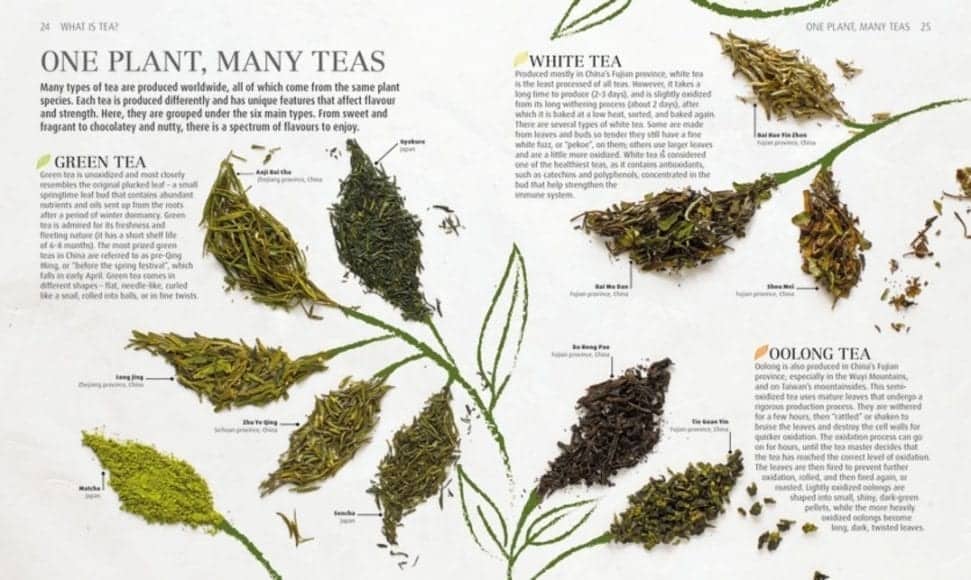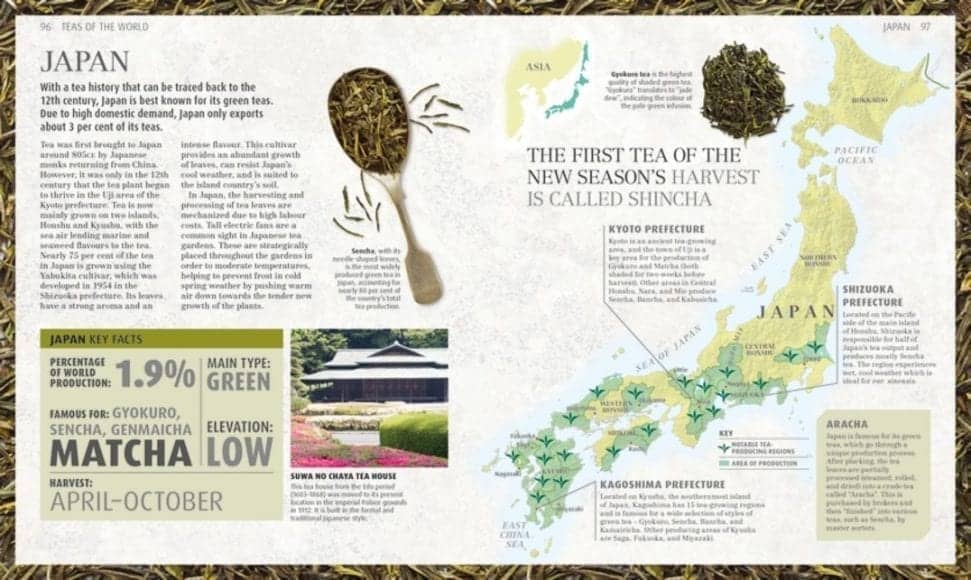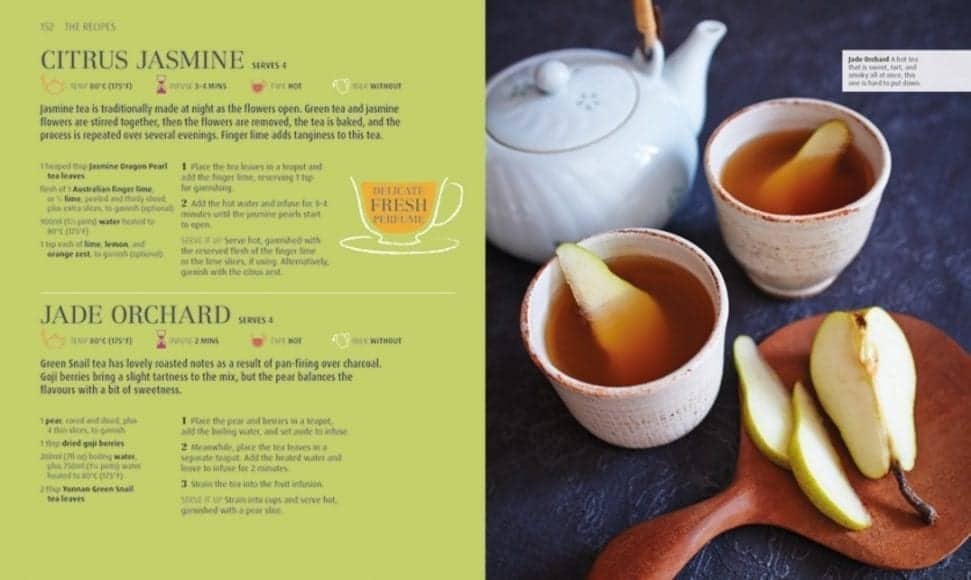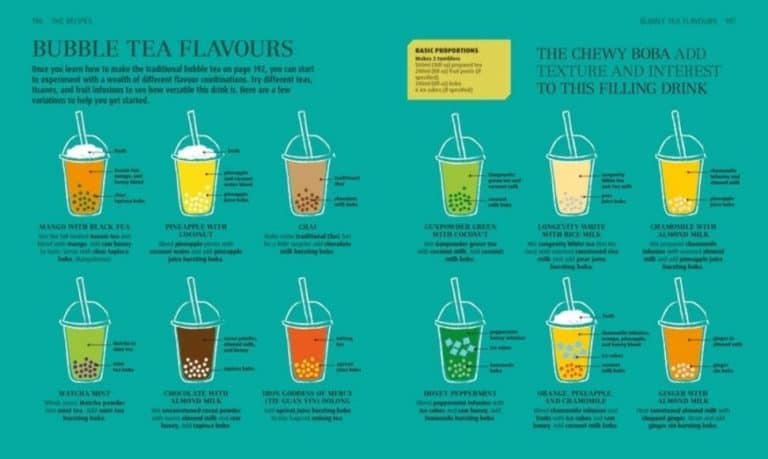
“Oh no!” I hear you cry “I don’t now anything about tea, other than you can have herbal or a cup of it with milk & sugar” Well fear not dear readers I am here to help you. Everything you need to know is contained in one new book from Dorling Kindersley & that book is called “The Tea Book”.


The Tea Book takes you gently by the hand and walks with you you through the best ways to choose, prepare and taste the many different varieties of tea available around the world, with everything you need to know to bring the fragrance and allure of the tea shop into your home.


This is the essential companion for all tea aficionados and newbies alike. The Tea Book features over one hundred international tea recipes, including chai tea, matcha and the increasingly popular bubble tea.


Learning about tasting notes will help you to identify key characteristics, so that you can tell your green tea from your pu’er and with information on growing and harvest seasons, & maps of the most important tea-producing regions this practical, fully illustrated guide is perfect for tea lover & the tea lover to be. I have already had to hide it when our eldest daughter came over to visit!
Of course, behind every seemingly simple book there is a great deal of knowledge, experience, hard work and dedication by the author & publishing team. I was lucky enough to have the opportunity to ask the author, Canadian, tea sommalier Linda Gaylard a few questions & would like to share our Q&A with you here.


How do you choose which flavours or types of tea to blend?
The most successful blends come from experimentation in small batches, while keeping track of the formula. Blending tea is similar to blending spices and flavours when cooking. Flavours that either harmonize with or complement each other are best. Since each tea has its own flavour profile – some are delicate (white tea), while others are more robust (most black teas) – if adding non-tea additions, it is best to try not to overpower the tea’s natural qualities.
What foods pair best with a cup of tea?
This really depends on the type of tea. I always advise people to taste the tea first without food so as to be able to identify tea’s flavours more easily. Once teas have been tasted it is then fun to find food flavours that mingle compatibly with the tea. I like to have small pieces and bites of foods to taste, rather than whole dishes of food. There are so many differences in tea flavours that it is difficult to offer tea/food pairing generalisations, but here are a few suggestions:
- Green tea: light fruits such as honeydew melon, young cheese i.e. fresh goat cheese
- Rock Oolong tea: Dark chocolate, aged Gouda cheese, dried dark cherries
- Black tea: Triple créme Brie cheese, lemon tart, bread and butter
Describe what a satisfying cup of tea is for you
A satisfying cup of tea is one that has been made with care and focus using good quality tea leaves. It tastes even better if it is made for you while you take a break to pause and enjoy it!
What is the best way to prepare a delicious cup of tea?
Not all teas are prepared in the same way. If you are making black tea, which is the most popular type of tea, start with good filtered water that has no heavy mineralization or chlorine odour. Even better – use still spring water. To make clean up easier, use a mesh infuser either in your cup or in your teapot. Measure approx. 1 tsp of leaves for each cup of made tea. Boil the water and pour over the leaves from a height of about 6 inches. Experiment with the timing, depending on your palate. 1½ – 4 minutes is a typical steeping range for black tea. Remove leaves from the infusion so that the tea doesn’t become bitter.
Who makes the world’s best teas? What sets them apart from other tea makers?
The Chinese have been growing and producing tea for over 4000 years, so tea culture plays an important role in Chinese life. Historically tea was given to the Emperor as a tribute, and in modern China, gifts of tea to friends, family and business associates are gratefully appreciated. Competitions for tea and its preparation can be found everywhere in China. There are thousands of styles of tea in China many of which are unique to certain towns and villages. Those who have the opportunity to taste these artisan teas are in for a rare treat!
For a first time tea taster, what tea would you recommend they try, and why?
If trying a loose leaf premium tea for the first time, I would recommend a Chinese black tea (referred to in China as “red tea” because of the colour of the liquid). Keemun, sometimes spelled Qimen, is considered the “burgundy” of black teas. It is prepared with boiling water and can be steeped for 3-4 minutes. It has a comforting familiar flavour quality with a deep maltiness and hints of burnt sugar. I like to refer to it as a “gateway” tea for those transitioning from commercial teabags to loose leaf tea.
Who really does tea better, Canada or England?
Both countries have made some progress in the past 10 years and both countries have challenges ahead to create a modern tea culture.
Tea arrived in England around 1660 and gradually became a elite ritual among the aristocracy. Over the centuries it evolved as a mass beverage with not much attention to quality. Eventually the English adopted the teabag and mug method of making tea and things went from there. There has been a renaissance of tea culture in England with boutique tea vendors selling high grade loose leaf teas and innovative afternoon teas in hotels, but there is still more to learn about modern tea culture.
Like most places in the Commonwealth, Canada has been attached to the “English” way of tea drinking. This is changing as we are becoming known throughout North America for being on the leading edge of tea education. New tearooms are opening and tea sommeliers are advising businesses and the public on the fine points of tea appreciation.








